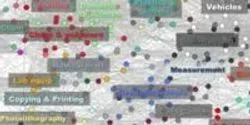patents

A novel jelly-like substance developed by Kansas State University researchers was recently issued a U.S. patent. The substance may be used for biomedical applications, ranging from cell culture and drug delivery to repairing and replacing tissue, organs and cartilage.

The Broad Institute announced April 15 that the United States Patent and Trademark Office has issued the first patent for an engineered CRISPR-Cas9 system that is enabling scientists to modify genes and better understand the biology of living cells and organisms. The institute applied for the patent in concert with the January 3, 2013 publication in Science (Cong, et al.) that described the use of the CRISPR enzyme, Cas9, for genome editing.

A bill to be heard today (Feb. 10) before the Wisconsin state Assembly's education committee would keep scientific research from the public eye if it passes.

According to a recent article by Jeff John Roberts of Gigaom, a 1997 patent held by Boston University (BU) could actually be detrimental to public research.

Renewable energy sources such as wind-powered generators can be more reliable and efficient by better controlling the process of getting electricity onto the power grid, according to a United States patent based on research by Dr. Shuhui Li, associate professor of electrical and computer engineering at the University of Alabama.











